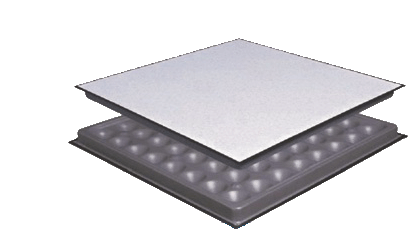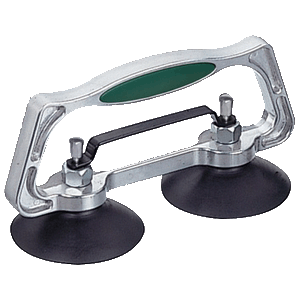|
Understanding Raised Access Floor Standards
|
|
|
European Raised Flooring Systems now fall into two main Specification Categories. Those being PSA MOB PF2 PS/SPU and the New European Standard EN 12825:2001. The MOB Standard was set up by the Public Services Agency and was compiled in 1992 and became the definitive Raised Flooring Standard. The EN 12825 standard was designed to allow all European manufacturers to be able to classify their systems under one standard whatever the performance of their Products.
|
|
|
The EN 12825 Specification
|
|
|
Panels are now graded by their ultimate loading capacity or Class (Which is defined as ultimate load at the time of failure of the element during the ultimate load test which involves placing a square indenter on various weak places on the panel and recording the Load when the panel collapsed.) Therefore the first classification is the Class the higher the number the more strength it will have:
|
|
|
Class
|
Ultimate Load (kN)
|
|
1
|
≥4
|
|
2
|
≥6
|
|
3
|
≥8
|
|
4
|
≥9
|
|
5
|
≥10
|
|
6
|
≥12
|
|
This Ultimate Loading is then divided by the Safety Factor and that gives you “The Working Load”. The Working Load is then applied to the panel and the deflection is measured and classified under the following table.
|
|
Classes of Deflection
|
Deflection (mm)
|
|
A
|
2.5
|
|
B
|
3
|
|
C
|
4
|
|
The panel is then defined by the tolerances it is made to. There are two classes 1 and 2 , “1” being the best. Therefore EN 12825 flooring Systems should be defined as following, example shows the strongest possible panel under EN 12825 Certification 6/A/3/2.
|
|
Ultimate load above 12kN
|
Deflection under working load less than 2.5mm
|
Safety Factor
|
Dimensional tolerances classification
|
|
6
|
A
|
3
|
2
|
|
PSA MOB PF2 PS/SPU Specification
|
|
|
The PSA MOB PF2 PS/SPU calls for four grades of floor. Their relative loads are listed below:
|
|
|
PSA MOB Grade
|
Concentrated Load (kN, 2.4mm deflection)
|
Uniform Load (kN/m²)
|
Safety Factor
|
|
|
over 300mm square identor
|
over 25mm square identor
|
|||
|
Light
|
At least 2.7 kN
|
At least 1.5 kN
|
20
|
3 x load for 5 mins
|
|
Medium
|
At least 4.5 kN
|
At least 3.0 kN
|
12
|
3 x load for 5 mins
|
|
Heavy
|
-
|
At least 4.5 kN
|
20
|
3 x load for 5 mins
|
|
Extra Heavy
|
-
|
At least 4.5 kN
|
30
|
3 x load for 5 mins
|
|
The systems shall sustain three times the particular static loadings for 5 minutes without collapse with the exception of the 11 KN four point static loads required for the EXTRA HEAVY GRADE which shall be 2 times for 5 minutes without collapse. The system shall be capable of withstanding this load at any of the positions which has been subjected to the particular static load test.
|
|
What are the main differences between PSA MOB PF2 PS/SPU and EN 12825 Specifications?
|
|
|
The main difference between the PSA and EN 12825 specifications is that in the PSA MOB PF2 PS/SPU specification there was a rigid table of performance and criteria and a strict pass or fail benchmark that needed to be certified by an independent authority. Within the EN 12825 specification there are now an infinite variety of products and performances being certified by the manufacturers and it can be very difficult to decode exactly what you will be getting unless you select one of the higher end products. It is very easy to disguise the performance of an inferior product with an EN 12825 Classification.
The most common product in use today is the PSA MOB PF2 PS/SPU Medium Grade Bare Panel for Office Use, it is difficult to directly compare the EN 12825 Specification against the MOB specification but the alternative should be either a 5/A/3/2 fully panel.
|
|
Resources Downloads |









